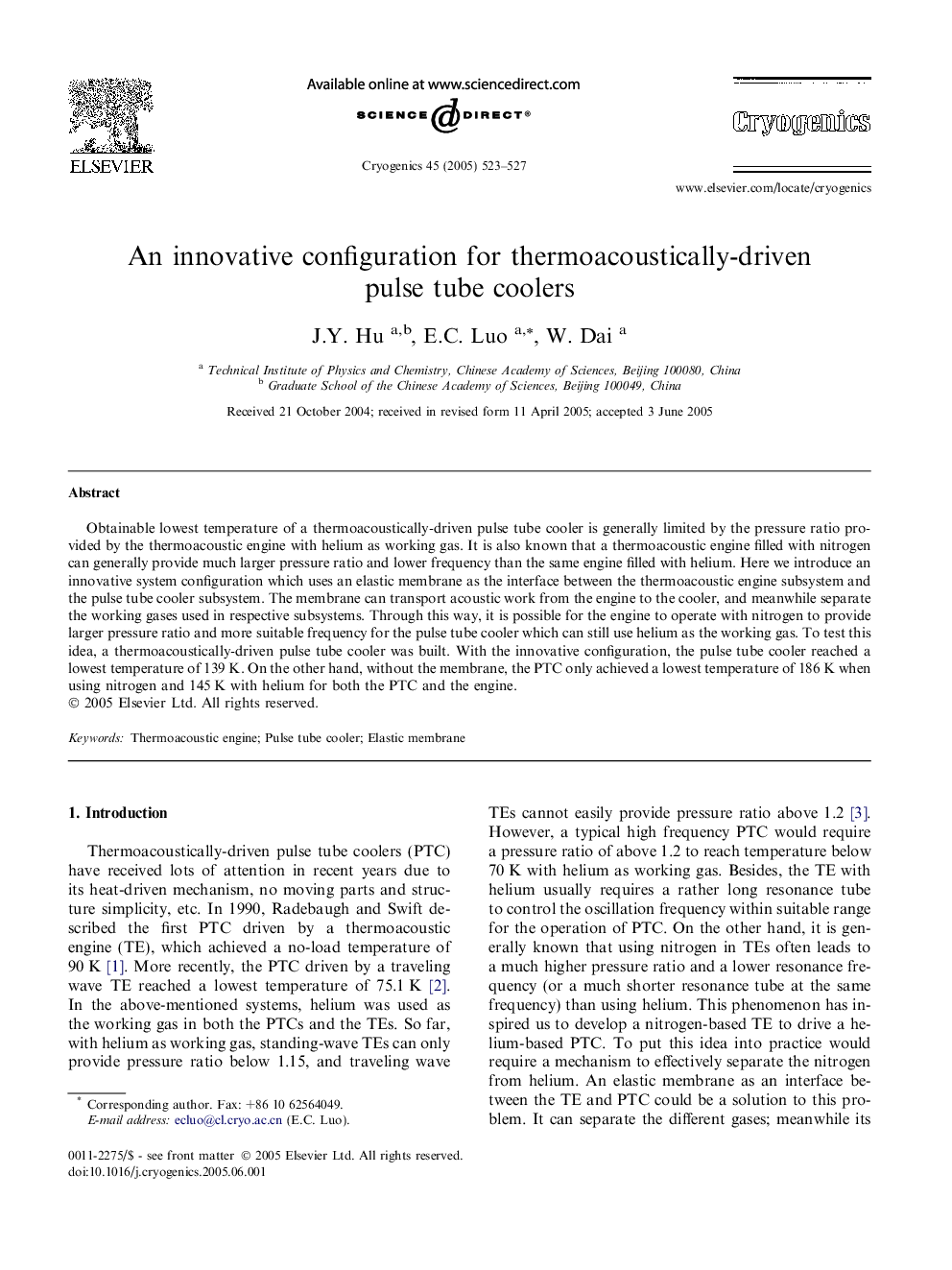| Article ID | Journal | Published Year | Pages | File Type |
|---|---|---|---|---|
| 10637680 | Cryogenics | 2005 | 5 Pages |
Abstract
Obtainable lowest temperature of a thermoacoustically-driven pulse tube cooler is generally limited by the pressure ratio provided by the thermoacoustic engine with helium as working gas. It is also known that a thermoacoustic engine filled with nitrogen can generally provide much larger pressure ratio and lower frequency than the same engine filled with helium. Here we introduce an innovative system configuration which uses an elastic membrane as the interface between the thermoacoustic engine subsystem and the pulse tube cooler subsystem. The membrane can transport acoustic work from the engine to the cooler, and meanwhile separate the working gases used in respective subsystems. Through this way, it is possible for the engine to operate with nitrogen to provide larger pressure ratio and more suitable frequency for the pulse tube cooler which can still use helium as the working gas. To test this idea, a thermoacoustically-driven pulse tube cooler was built. With the innovative configuration, the pulse tube cooler reached a lowest temperature of 139Â K. On the other hand, without the membrane, the PTC only achieved a lowest temperature of 186Â K when using nitrogen and 145Â K with helium for both the PTC and the engine.
Related Topics
Physical Sciences and Engineering
Materials Science
Electronic, Optical and Magnetic Materials
Authors
J.Y. Hu, E.C. Luo, W. Dai,
